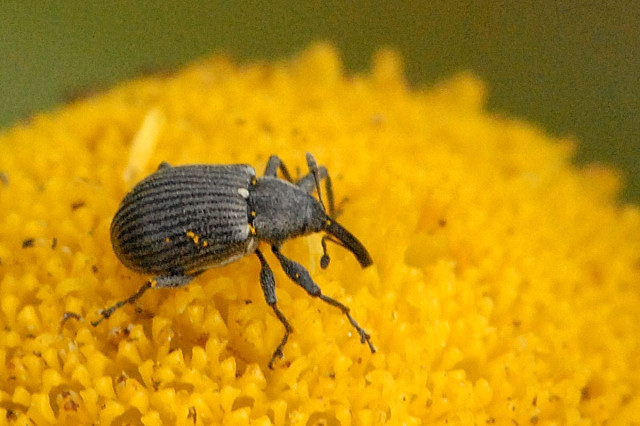A cool spring has meant a slow start to the growing season, but it’s never too early to be on the lookout for pests.
Strawberry blossom weevil is a case in point, according to presentations at the growers’ short course during the Pacific Agriculture Show this year.
Originally identified in Abbotsford in a backyard raspberry bush in 2019, an established population of the weevil – native to Asia, Europe and North Africa – was confirmed in 2020. US authorities issued a federal order last year regulating entry.
According to Warren Wong, who works with research scientist Michelle Franklin at the Agassiz Research and Development Centre, weevils start laying eggs in early May. The activity means they’re likely to be most visible to growers at this time.
The eggs are deposited in immature buds and the stems are cut, halting the blossom’s development.
“Start looking for damage in your crops in early May, the adults may already be there. You’ll begin to see bud damage within a week of their arrival,” says Wong. “The highest bud damage was seen in older strawberry fields, so I’d focus monitoring in these fields and fields which are not as hardy.”
Since the weevils have a direct impact on yields, provincial entomologist Tracy Hueppelsheuser says growers should have a zero-tolerance policy.
“How many weevils is too many? We don’t have an action threshold yet for BC,” she says, but notes that most growers will want as few as possible, as with other types of weevils. “Our experience in BC so far has been, if you can find these weevils in your field, you probably need to spray for them.”
While there are not products registered for use against strawberry blossom weevil, Hueppelsheuser says there is an emergency registration for Capture in raspberries for post-bloom use that will be helpful. She also notes that growers using Malathion, pyrethroids (Group 3) or diamides (Group 28) to control other pests will also see benefits with respect to strawberry blossom weevil.


 Tree fruit growers struggle to source plants
Tree fruit growers struggle to source plants